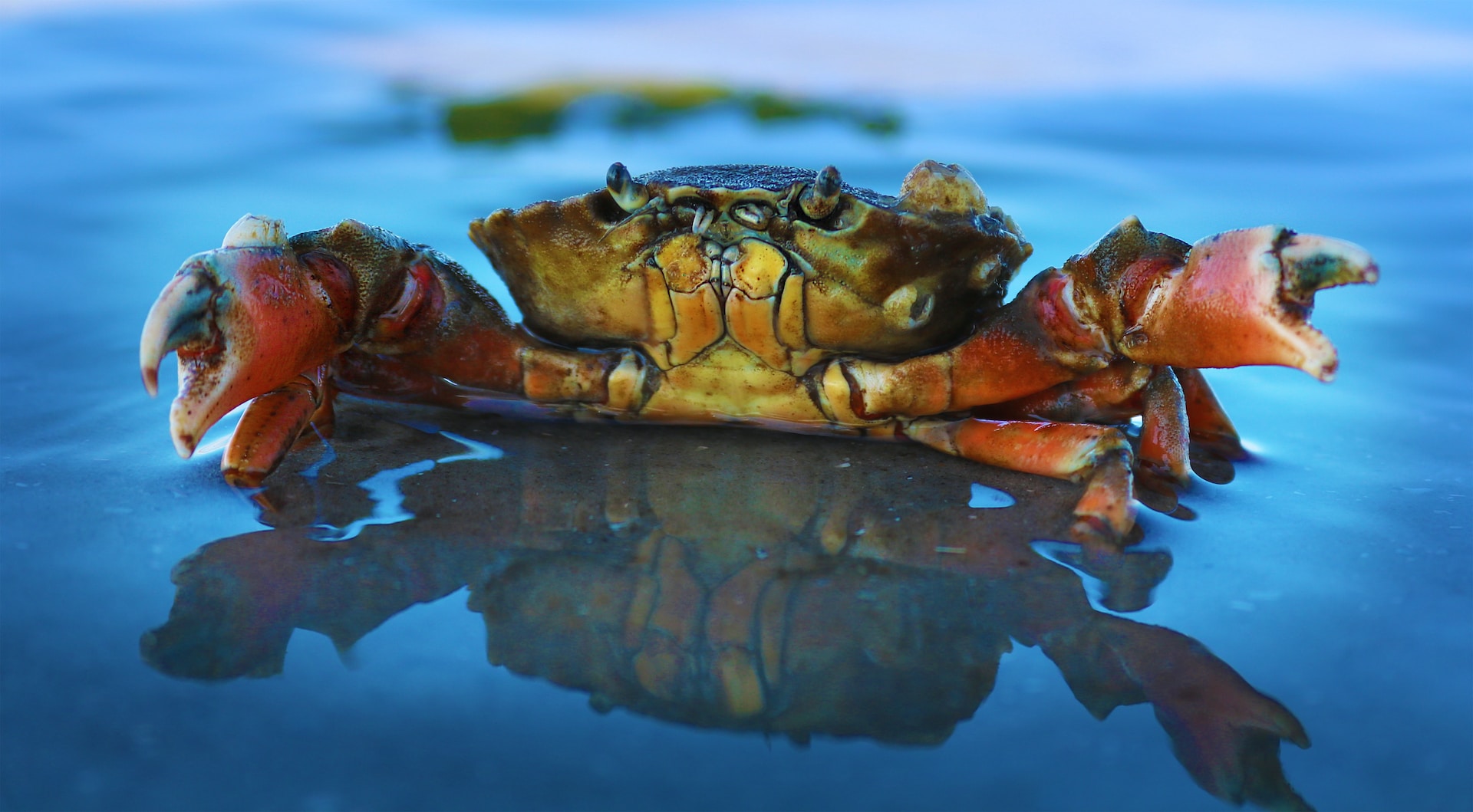
When it comes to the fascinating world of marine life, crabs are a standout species that never fail to captivate our imagination. These intriguing creatures are known for their unique appearance, interesting behavior, and crucial role in the ecosystem. Whether you’ve encountered them scuttling along the beach or savored their delicate meat in a delectable seafood dish, there’s always more to learn about these remarkable crustaceans.In this article, we’ll dive deep into the world of crabs and uncover 18 fascinating facts about them. From their incredible adaptations to their impressive range of species, this comprehensive guide will enlighten you on the wonders of these incredible creatures. So buckle up and get ready to explore the captivating world of crabs!
Key Takeaways:
- Crabs are diverse, with over 4,500 species, and play a vital role in marine ecosystems. Their unique adaptations and behaviors make them fascinating creatures worth appreciating and protecting.
- From regenerating limbs to impressive camouflage skills, crabs are truly remarkable. However, they face threats from habitat destruction and overfishing, making it crucial to safeguard their natural habitats for future generations.
Variety of Species
There are approximately 4,500 known species of crabs worldwide, showcasing a wide range of sizes, colors, and behaviors. From the tiny pea crab, measuring just a few millimeters, to the giant Japanese spider crab, with a leg span of over three meters, crabs exhibit incredible diversity.
Exoskeleton Protection
Crabs have a hard exoskeleton made of chitin that serves as a protective shield against predators and provides structural support. As a crab matures, it periodically sheds its old exoskeleton and forms a new, larger one through a process called molting.
Incredible Adaptations
Crabs have evolved various adaptations for survival, such as their sharp pincers, which they use for defense and capturing prey. Some crabs also have specially modified appendages for swimming, digging, or even carrying their offspring.
Omnivorous Diet
Most crabs are omnivorous, consuming both plant matter and animal prey. Their diet includes algae, mollusks, fish, worms, insects, and even decaying organic material. Some larger species like the coconut crab have been known to feed on fallen fruits as well.
Social Behavior
While many crabs lead solitary lives, some species, like the hermit crab, exhibit social behavior by forming small groups or colonies. This allows them to share resources, communicate, and defend themselves collectively.
Ecological Importance
Crabs play crucial roles in maintaining the balance of marine ecosystems. They help control populations of other organisms, act as scavengers to clean up decaying matter, and serve as a food source for various predators.
Regenerating Limbs
If a crab loses a limb during a confrontation or while escaping from predators, it can regenerate a new one through a process called autotomy. Though the regenerated limb might not be as functional or identical to the original, it allows the crab to continue its daily activities.
Unique Reproductive Methods
Crabs have fascinating reproductive methods. Some species release their eggs into the water, where they hatch into larvae, while others carry their fertilized eggs under their abdomens until they are ready to hatch.
Migratory Behavior
Certain species of crabs, like the Christmas Island red crab, exhibit extraordinary migratory behavior. They journey en masse from the forest to the ocean to reproduce, creating an awe-inspiring spectacle.
Extreme Longevity
Crabs display varying lifespans depending on the species. While some smaller species live for just a year or two, others, such as the deep-sea hydrothermal vent crabs, can survive for over 20 years in harsh deep-sea environments.
Camouflage Experts
Many crab species possess remarkable camouflage skills, blending in with their surroundings to avoid detection by predators or to wait for unsuspecting prey to approach.
Ecosystem Engineers
Crabs like the fiddler crab and the ghost crab contribute to ecosystem engineering by constructing burrows in soil or sand. These burrows help with water drainage, aerate the soil, and provide shelter for other organisms.
Sensory Superpowers
Crabs have a keen sense of touch and possess specialized sensory organs called statocysts, which enable them to perceive sound, vibrations, and changes in water pressure. Some species also have well-developed eyes, allowing them to see in different levels of light.
Habitat Diversity
Crabs can be found in a variety of habitats, from the depths of the ocean to freshwater rivers, mangroves, and even land. They have successfully adapted to diverse environments across the globe.
Impressive Claw Strength
Crabs are renowned for their powerful claws, capable of exerting considerable force. The coconut crab, for instance, can crush coconuts with its massive claw strength.
Ancient Existence
Crabs have roamed the Earth’s oceans and shores for millions of years. Fossil evidence suggests that crabs have been present on our planet for over 200 million years, making them one of the oldest creatures still in existence.
Culinary Delicacies
Crabs are widely appreciated in many cuisines around the world. From succulent crab legs to delectable crab cakes, they are considered a delicacy and are enjoyed by seafood lovers everywhere.
Environmental Threats
Unfortunately, crabs face numerous threats, including habitat destruction, pollution, overfishing, and climate change. It is vital to protect their natural habitats and promote sustainable fishing practices to ensure their continued existence.
Crabs continue to intrigue scientists and nature enthusiasts alike with their remarkable adaptations, diverse behaviors, and significant ecological contributions. These 18 facts about crabs provide just a glimpse into the fascinating world of these captivating crustaceans. So, the next time you encounter a crab scuttling along the shore or hiding in the sand, take a moment to appreciate the incredible complexity that lies within this seemingly simple creature.
Conclusion
Crabs are fascinating creatures that have captivated human interest for centuries. With their unique appearance and intriguing behaviors, crabs have become a common subject of study for scientists and a favorite menu item for seafood enthusiasts. From their incredible ability to regenerate limbs to their sophisticated communication strategies, crabs continue to surprise and amaze us.
Whether you encounter them on the beach or enjoy them on your dinner plate, take a moment to appreciate these incredible creatures and the many wonders they bring to our world. So next time you see a crab scuttling along the sand or served on a platter, remember the 18 intriguing facts that make them truly remarkable.
Crabs truly are a marvel of nature, and their impact on both marine ecosystems and human culture is undeniable. So dive into the world of crabs and discover the many wonders they have to offer.
FAQs
Q: Do all crabs live in the ocean?
A: No, while many crabs do live in the ocean, there are also freshwater and land-dwelling crabs.
Q: Can crabs swim?
A: Most crabs are not strong swimmers, but they can move through the water by paddling and utilizing their appendages.
Q: How long do crabs live?
A: Crabs have varying lifespans depending on the species, but most live for several years.
Q: Do crabs have teeth?
A: Crabs have a specialized structure called a gastric mill that helps them crush and grind their food.
Q: Can crabs regenerate their limbs?
A: Yes, crabs have the ability to regenerate lost limbs through a process called autotomy.
Crabs are truly remarkable creatures, with their diverse species, incredible adaptations, and important roles in ecosystems worldwide. From their powerful claws to their unique reproductive methods, these crustaceans never cease to amaze. If you're curious to learn more about specific types of crabs and their fascinating characteristics, explore our articles on Xanthid crabs and crab spiders. And for those interested in the nutritional value of a popular seafood dish, check out our piece on steamed snow crab legs. Dive deeper into the world of crabs and uncover even more captivating facts!
Was this page helpful?
Our commitment to delivering trustworthy and engaging content is at the heart of what we do. Each fact on our site is contributed by real users like you, bringing a wealth of diverse insights and information. To ensure the highest standards of accuracy and reliability, our dedicated editors meticulously review each submission. This process guarantees that the facts we share are not only fascinating but also credible. Trust in our commitment to quality and authenticity as you explore and learn with us.


